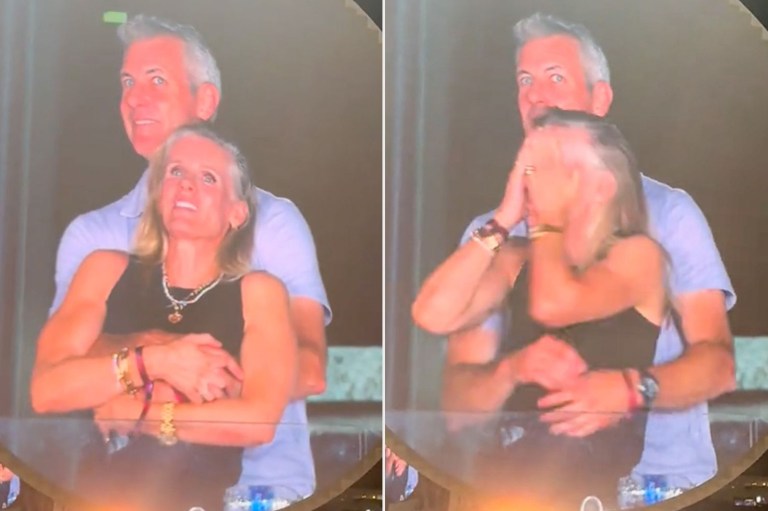
Trauma Bonding Is Why It Can Feel Impossible To Let Go Of Toxic Relationships
Maybe you’ve seen it, or maybe you’ve been in it: the relationship that’s dramatic, explosive, unhealthy… and completely irresistible.
Before you start thinking that you or someone you know is a total masochist, there’s actually a deep psychological reason that we become attached to damaging relationships, and understanding that dynamic better can only help you and others who are stuck in the future.
Trauma bonding is a process through which you begin to confuse abusive behavior for love.
There are a number of reasons why this happens, and it ultimately makes it very hard not only to move on initially, but also to not allow the experience to impact relationships later in life.
It often starts out as magnetic, instantaneous “love.”
Whereas real love is often a process during which you grow to care for a person over time, toxic relationships are often immediately explosive and compelling.
In them, you might think that you and a virtual stranger are just “meant to be” through a series of abstract signs and preexisting beliefs you both have. You might be confusing your initial physical attraction to one another for this type of electric “soulmate” partnership, but really, neither true attraction nor love, functions this way.
What’s really happening is that you and your partner are connecting over a shared wound. This is what draws you to one another, and then makes you commit compulsively. You are each meeting an unconscious need you aren’t aware of, filling a gap, helping to avoid a fear, or enable another damaging behavior.
It can be a continuation of a relationship from early childhood.
For many people, their initial trauma bonding happened when they were young.
In these cases, one or both of their immediate caretakers abused them in some way, perhaps obvious, or perhaps not. Regardless, they were at once completely dependent on the person who was hurting them, so what often happens is that the concept of “love” is conflated with “getting hurt.” This is what drives the person to attract and choose toxic relationships as an adult.
Trauma bonds solidify thanks to a two part cycle that can feel impossible to break.
Ultimately, though preexisting problems can attract you and your trauma bond partner together, what actually creates the bond itself is a two part cycle of reinforcement and punishment.
First, you get “love bombed.” This is the point at which the person says you’re absolutely meant to be together, you’re the perfect partner for them, and you’re going to be with them no matter what and forever — all things you cannot realistically know within a short period of time.
Next, what differentiates this from “love at first sight” is that it is followed up with a form of punishment. Unable to live up to those unrealistic expectations, your partner begins to degrade you and make you feel terrible because, ultimately, you cannot sustain the behavior that makes their wound feel better. You cannot be the person that saves them, and they make that your fault.
It starts to become the perfect storm of a neurochemical response and behavioral stimuli.
In your desire to keep your “perfect partner,” you think that you need to fix yourself, and try again.
You have to stop confusing traumatic bonding for true love.
The best weapon we have to ensure that relationships are healthy, safe and mutually enjoyable is awareness. There are a few ways you can be sure that you don’t fall into a trap like this.
Take your time
Healthy, sustainable relationships are a growing process. Despite what you might hear about the “honeymoon phase” and “love at first sight” and simply “knowing” you are meant to be with someone, all of that can exist alongside you taking time and space to get to know someone before you dive all the way in with them.
Remember that someone who is genuinely interested in you would never rush you into a relationship
That would only happen if they need your presence for something other than genuine companionship.
Address your own wounds
If you have a history of painful or traumatic relationships, especially if they are dating back to childhood, take initiative to start working through those in a safe and healthy way. Perhaps that means receiving professional help, or even just journaling and talking with friends. It depends on your situation and the severity of your experiences.
Either way, working on healing yourself now is always a great way to ensure that you’re stable in the future.
Watch for patterns
If your new partner insists that all of their exes were “crazy,” perhaps they are the common denominator. If your new partner has a very consistent pattern in their lives, such as that they cannot keep a job, or any friends, or stay in one city for long, there is almost always a reason.
Watch for grooming techniques
Be very mindful of whether or not someone starts out by flattering you intensely, and then asking you for money. Or, perhaps, they want to move in too quickly, or anything else that seems abrupt or uncomfortable. Ultimately, you have to decide what feels right for you, but be wary of anyone who does not respect your boundaries, particularly right after they have warmed you up by complimenting you and placing you on a pedestal of sorts.
Ultimately, simply understanding what’s happening in your brain and body when you experience these very intense, addictive and yet ultimately destructive relationships is essential, because unless you know what’s going on, you’re not going to be able to ask for help, leave, or even pace your next relationship to ensure it’s healthy and sustainable.
No matter what, the relationships in your life — romantic, and not — should exist to improve your existence, and make you feel better about who you are.
Anything less is a red flag, one that warrants evaluation.











